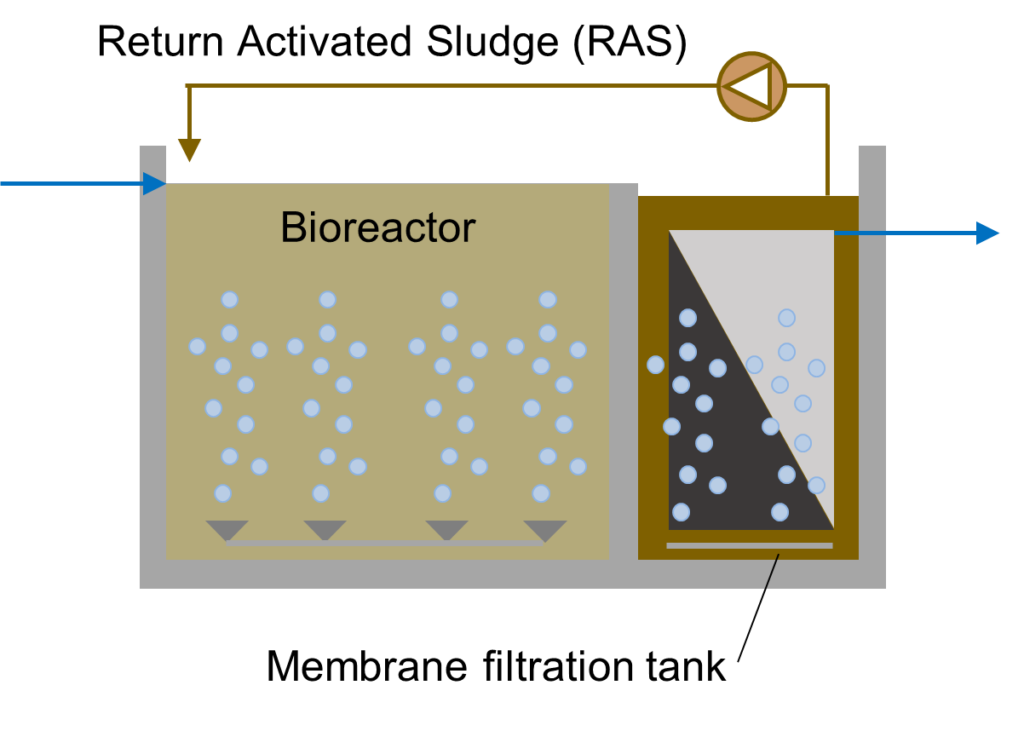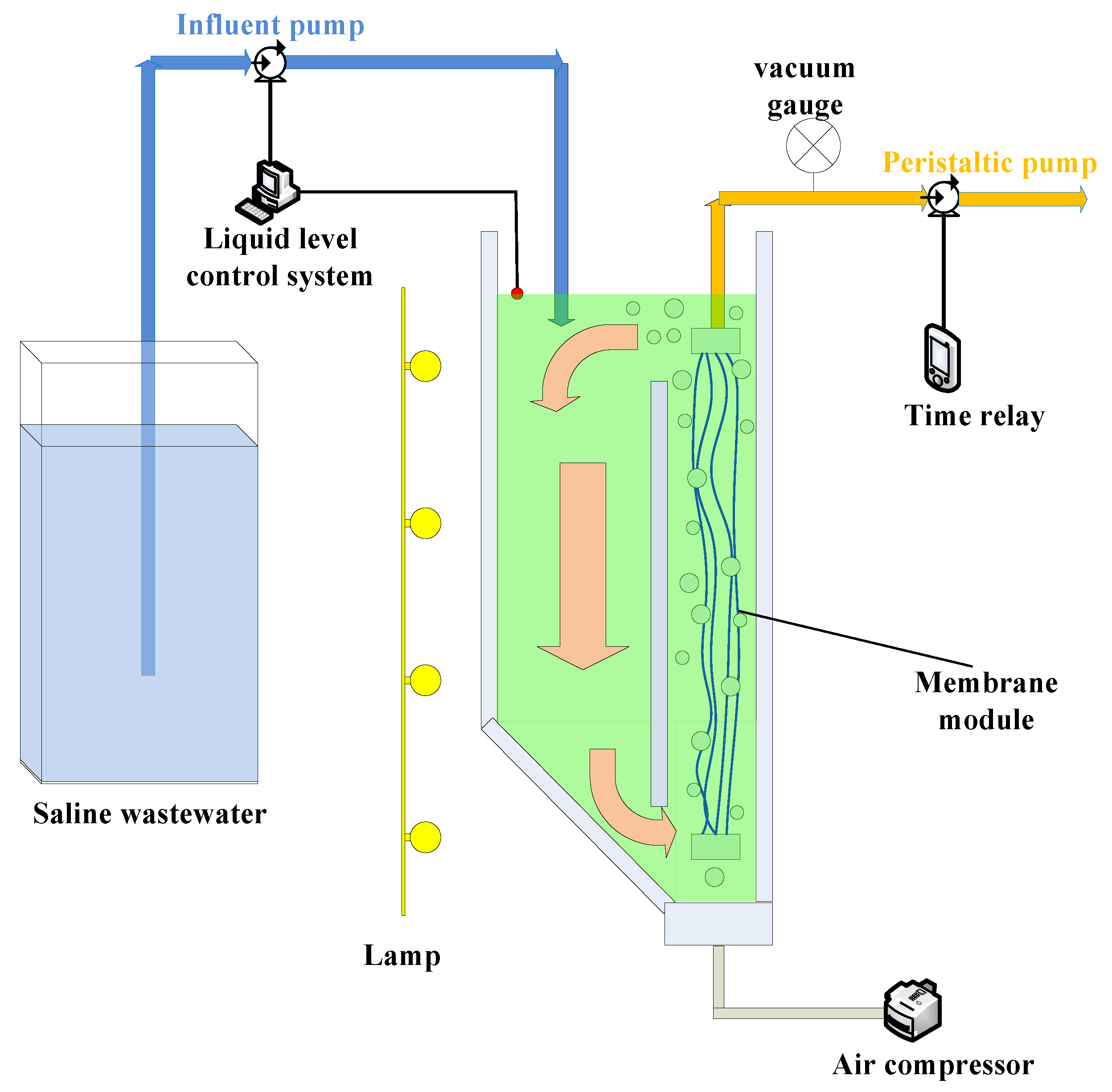The Role of Membrane Bioreactor in Achieving Higher Effluent Quality Standards
Wiki Article
Membrane Bioreactors Clarified: Reliable Solutions for Tidy Water
Membrane bioreactors (MBRs) have actually emerged as an innovative option for dealing with the pushing challenges of wastewater therapy - Membrane Bioreactor. By incorporating organic processes with sophisticated membrane purification, MBRs not only improve the top quality of treated water yet likewise decrease the spatial demands of therapy centers.
What Are Membrane Layer Bioreactors?
Membrane layer bioreactors (MBRs) are innovative wastewater therapy systems that integrate biological destruction procedures with membrane layer filtering modern technology. This combination allows for the reliable elimination of contaminants from water, making MBRs a preferred option in various applications, consisting of community wastewater therapy and industrial effluent monitoring.
Among the essential benefits of MBRs is their ability to generate premium effluent, frequently appropriate for reuse in watering or commercial procedures. In addition, MBRs require a smaller sized footprint contrasted to standard treatment systems, making them suitable for city setups where space may be restricted.
Moreover, MBRs can effectively take care of differing influent loads and are much less susceptible to the results of hazardous shocks. These characteristics add to their growing appeal as a sustainable option for resolving the increasing demand for clean water while reducing environmental effects.
Just How Membrane Bioreactors Work
While the procedure of membrane layer bioreactors (MBRs) may seem complex, it essentially rotates around the harmony between biological processes and membrane layer purification. MBRs integrate a biological treatment process, usually triggered sludge, with a membrane separation device to treat wastewater efficiently.In an MBR system, wastewater is first introduced into a bioreactor where microbes weaken organic issue and other contaminants. The organic task decreases the concentration of pollutants while advertising the development of biomass. Following this biological therapy, the blended alcohol goes through membrane filtration, which can be microfiltration or ultrafiltration, relying on the preferred effluent top quality.
The membrane layers work as a physical barrier, permitting water and small solutes to pass while maintaining put on hold solids and bigger particles. This allows the system to preserve a high concentration of biomass within the activator, boosting the treatment efficiency.
Moreover, the continual separation of treated water from the biomass assists in a compact style and lessens the impact of the treatment center. On the whole, the mix of biological destruction and membrane layer purification in MBRs causes reliable and reliable wastewater therapy, ensuring top quality effluent ideal for different applications.
Benefits of MBR Technology
One of the essential benefits of membrane bioreactor (MBR) modern technology is its capacity to generate top quality effluent with a dramatically minimized impact compared to conventional wastewater therapy approaches. MBR systems successfully integrate biological therapy and membrane layer filtering, leading to remarkable removal of impurities, consisting of put on hold solids, pathogens, and natural matter. This ability leads to effluent that frequently meets or exceeds rigorous regulatory criteria for reuse and discharge.In addition, MBR modern technology enables for greater biomass concentrations, which boosts the treatment efficiency and decreases the needed activator quantity. This portable style is specifically beneficial in city locations where space is limited. The functional flexibility of MBR systems also implies they can adjust to differing influent qualities and flow rates, making them suitable for a variety of applications.
Moreover, the lowered sludge production connected with MBR procedures contributes to decrease operational and maintenance costs. The membrane layers offer as a physical obstacle, decreasing the risk of obstructing and pop over to this site enabling longer functional periods between cleansing. On the whole, the benefits of MBR technology make it an appealing option for lasting wastewater treatment, attending to both ecological issues and the requirement for efficient resource management.
Applications of Membrane Layer Bioreactors
With their adaptability and efficiency, membrane bioreactors (MBRs) discover applications throughout various industries, including metropolitan wastewater treatment, commercial procedures, and also water improvement. In community setups, MBRs give a portable option for treating wastewater, properly eliminating contaminants while concurrently generating premium effluent that satisfies strict regulative criteria. This makes them particularly suitable for areas with minimal room.In industrial applications, MBR modern technology is used for Homepage dealing with process water, especially in markets such as food and beverage, pharmaceuticals, and petrochemicals. These markets gain from MBRs' capability to manage high natural lots and their efficiency in recovering valuable resources from wastewater, such as nutrients and water.
In addition, MBRs play an essential duty in water reclamation initiatives, enabling the reuse of treated wastewater for watering, industrial processes, or also as drinkable water after further therapy (Membrane Bioreactor). Their effectiveness in getting rid of pathogens and pollutants makes them a reputable selection for guaranteeing water high quality in various reuse applications
Future of Water Therapy Solutions
The future of water treatment services is positioned for transformative improvements driven by technical innovation and raising ecological awareness. As global water shortage ends up being a pushing issue, new methodologies, including membrane bioreactor (MBR) systems, are set to play a critical duty in enhancing the efficiency and sustainability of water therapy processes.Arising modern technologies such as expert system and maker discovering are expected to optimize therapy operations, permitting real-time monitoring and anticipating upkeep. This will boost the Look At This general dependability and efficiency of water therapy centers. Innovations in membrane layer products, such as graphene and nanofiltration, assure to boost permeation prices and reduce fouling, leading to reduced energy consumption and functional prices.
Furthermore, the assimilation of renewable power sources right into water treatment plants will certainly add to greener techniques. The circular economic climate design will additionally acquire traction, urging the healing of important resources from wastewater, such as nutrients and power.
Conclusion

Membrane layer bioreactors (MBRs) have actually arised as an innovative solution for addressing the pushing difficulties of wastewater treatment. By incorporating organic processes with advanced membrane layer purification, MBRs not only enhance the top quality of treated water but also minimize the spatial needs of treatment facilities.One of the essential advantages of membrane bioreactor (MBR) modern technology is its capacity to generate high-quality effluent with a substantially lowered footprint contrasted to traditional wastewater treatment approaches.With their convenience and effectiveness, membrane bioreactors (MBRs) discover applications throughout different sectors, including community wastewater therapy, commercial procedures, and even water improvement.In conclusion, membrane layer bioreactors represent a substantial improvement in wastewater treatment modern technology, integrating organic procedures with reliable membrane layer purification to produce top notch effluent.
Report this wiki page